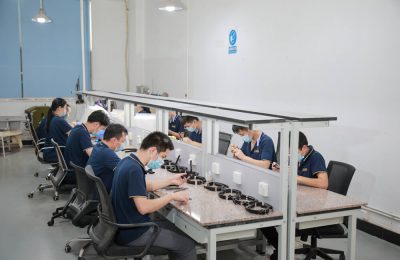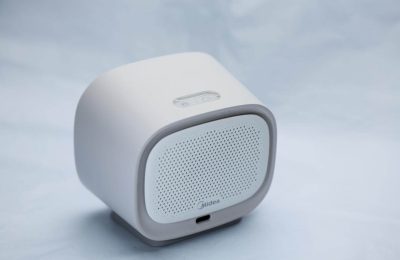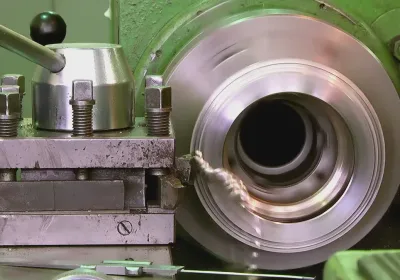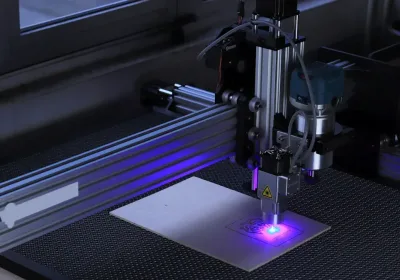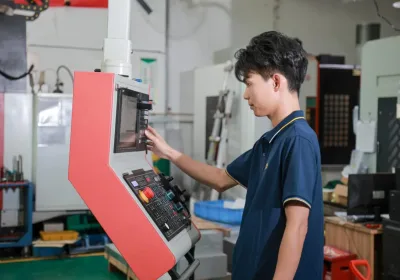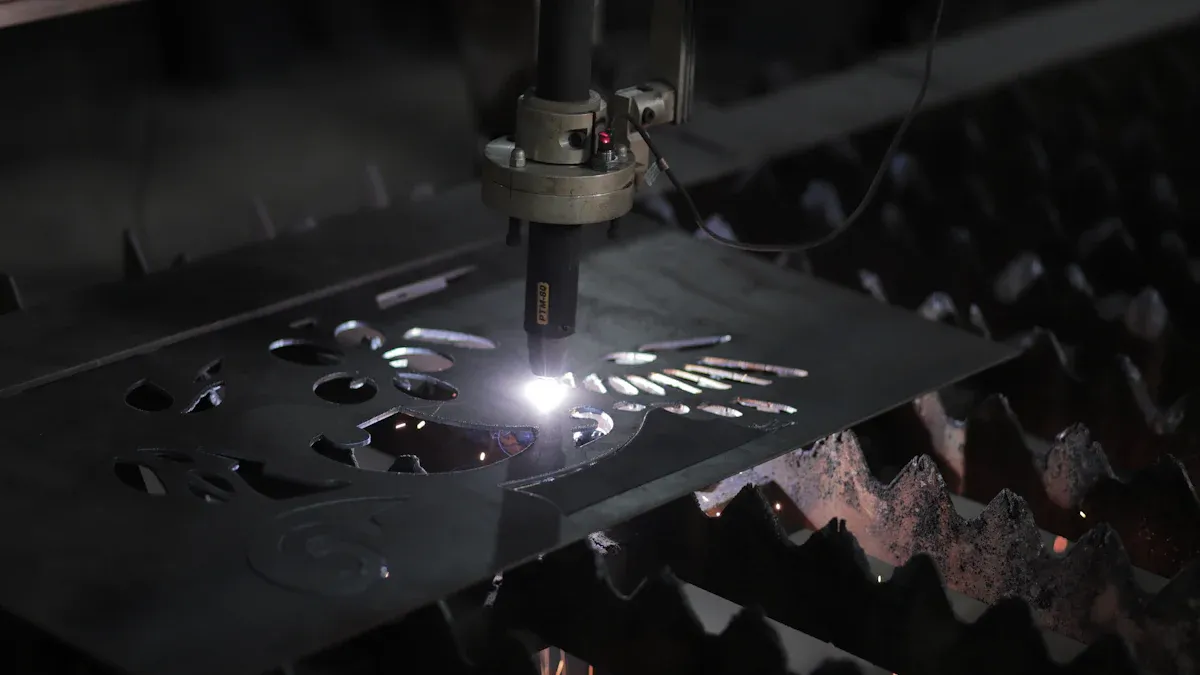
Computer Numerical Control (CNC) technology changes manufacturing by using machines. These machines work automatically and make parts with great accuracy. CNC systems help create complex parts quickly and with the same quality every time. The global CNC market is growing fast. It is expected to rise from $90.5 billion in 2024 to $144.4 billion by 2033. This means it will grow about 5.06% each year. By 2030, over 2.8 million CNC machines may be needed. New high-speed machining makes this possible. This technology helps factories work faster and grow easily.
Key Takeaways
CNC machines help make parts faster and more accurate.
The CNC market is growing fast, showing high demand in industries.
These machines make exact copies of parts, important for aerospace and healthcare.
CNC reduces costs by cutting waste and needing less labor.
It can create parts from metal, plastic, and more for many uses.
New ideas like AI make CNC machines smarter and better.
CNC helps the planet by saving energy and cutting waste.
Businesses can grow and keep quality high with CNC machines.
Understanding Computer Numerical Control
What is CNC?
CNC stands for Computer Numerical Control. It uses computers to control machines. Instead of using hands, you program the machine. The computer tells the machine what to do. CNC helps make parts that are accurate and the same every time. Safety and performance rules, like ISO 23125 and ISO 12100, keep CNC machines safe to use.
CNC is very important in factories today. It removes mistakes made by people and makes work precise. CNC machines can work with metals, plastics, and other materials. This makes them useful in many industries like cars, airplanes, and healthcare.
How CNC Technology Works
CNC turns digital designs into real objects. First, you make a design using CAD software. Then, CAM software changes the design into instructions called G-code. The G-code tells the machine how to move.
The machine uses G-code to control speed, position, and depth. Sensors check things like vibration and heat to keep it working well. For example, cutting speed depends on how hard the material is. Machines also collect data to improve work and plan repairs.
CNC machines are very exact. Every move is planned to make the right part. This lets you create detailed designs that hands can't make.
Evolution of CNC Technology
CNC technology has changed a lot over time:
Year | What Happened |
|---|---|
1940s | Engineers made NC to build better helicopter parts. |
1952 | MIT showed the first NC machine for automatic work. |
1960s | Computers were added, creating CNC for better control. |
Today | New tools like AI and 5-axis machining improve CNC. |
In the 1940s, engineers made NC to improve factory work. By 1952, MIT showed the first NC machine, changing how machines worked. In the 1960s, computers made NC into CNC, adding more control.
Now, CNC keeps getting better. New ideas like AI and multi-axis tools make it more advanced. CNC machines can even mix methods to make tricky shapes. These updates keep CNC important in making things.
Benefits of CNC Machining
Precision and Accuracy
CNC machines are very precise. They make detailed designs easily. These machines create parts that are the same every time. This is because they follow programmed instructions carefully.
Here’s how CNC machines stay accurate:
They can repeat tasks and make identical parts each time.
They work well across different machines and operators.
Tools like charts check performance and fix problems fast.
Regular checks keep machines working within strict limits.
CNC technology is perfect for industries needing high accuracy. Examples include making airplane parts, medical tools, and car components.
Efficiency and Productivity
CNC machines save time and boost production. They work automatically, needing little human help. This lets them run longer and make more parts quickly.
For instance:
One company saved $72,000 per machine by reducing waste.
Another saved $1.5 million in a year by tracking machines.
To improve efficiency, you can:
Use better software to speed up cutting and save time.
Keep machines in good shape with regular maintenance.
Train workers to use CNC machines correctly.
These steps help you make more parts faster and save money.
Versatility in Manufacturing
CNC machines are flexible and work in many industries. They can make airplane parts, car parts, and medical tools.
Here’s how CNC helps different industries:
Industry | Benefit | What It Does |
|---|---|---|
Aerospace & Defense | Makes exact parts that meet strict safety rules. | |
Fast Production | Produces car parts quickly, saving time and money. | |
Medical Devices | Cost-Effective | Creates detailed tools that are safe and reliable. |
CNC machines also cut materials precisely, reducing waste. They work with many materials and designs, making them useful for modern factories.
By using CNC technology, you can meet industry needs while keeping quality high and costs low.
Cost-effectiveness and scalability
CNC machining saves money and grows with your needs. It uses automation to cut labor costs and reduce mistakes. This keeps production high-quality while saving money. Unlike older methods, CNC lets you expand easily without losing accuracy or speed.
A big benefit of CNC is lower production costs. Here's a cost comparison:
Cost Factor | CNC Machining Total Cost | Traditional Machining Total Cost | Savings |
|---|---|---|---|
Labor | $200 | $600 | $400 |
Material Utilization | $900 (for 100 Kg) | $750 (for 100 Kg) | $150 |
Tool Wear | $40 | $75 | $35 |
Downtime | $100 | $300 | $200 |
Total | $1240 | $1725 | $785 |
This table shows how CNC saves money on labor and downtime. The extra savings can help you grow or buy better tools.
CNC machines are also great for scaling up. They can make small or large batches without much change. You can program them for different designs and materials quickly. This makes your factory ready for more work as your business grows.
Another advantage is better material use. CNC cuts materials precisely, wasting less. This saves money and helps the environment. Industries like aerospace and cars use CNC to make tricky parts with little waste. This lowers costs and supports green practices.
If you want to grow your business, CNC is the way to go. It helps you make more parts faster without losing quality. Keeping machines updated and maintained makes them even better for long-term use.
Types of CNC Machining Processes
CNC machining has different processes for various manufacturing needs. Knowing these processes helps you pick the best one. Below are three common types of CNC machining.
CNC Milling
CNC milling is a flexible and popular machining process. It uses spinning tools to cut material and make shapes. Milling machines are great for detailed designs and large production.
Why CNC milling is special:
It works automatically, so less manual work is needed.
It is very accurate, making parts exactly as designed.
It handles both small and big production jobs well.
But, CNC milling can cost more than other methods. Choosing between milling, 3D printing, or laser cutting depends on your project’s needs.
CNC Turning
CNC turning is another important machining method. It spins the material while a tool cuts it into shape. This process is best for making round parts like bolts and shafts.
CNC turning is useful because:
It makes round parts with high accuracy.
It gives smooth finishes on metal and plastic pieces.
It works fast, making parts quickly and reliably.
CNC turning machines are fast and dependable. They are perfect for industries needing round, high-quality parts.
CNC Drilling
CNC drilling is used to make precise holes in materials. A spinning drill bit creates holes for assembling parts securely.
Benefits of CNC drilling include:
It repeats the same process perfectly every time.
It saves time and reduces waste, lowering costs.
Feature | Details |
|---|---|
Accuracy | Ensures holes are placed correctly for secure assembly. |
Repeatability | Duplicates drilling processes consistently for strict requirements. |
Efficiency | Speeds up production, cuts labor, and reduces waste, saving money. |
CNC drilling is a trusted option for factories needing precision and speed.
Electrical Discharge Machining (EDM)
Electrical Discharge Machining (EDM) is a special CNC method. It uses electric sparks to shape materials instead of cutting tools. EDM removes material by sending controlled sparks between an electrode and the workpiece. This process works well for tough materials like titanium and strong alloys that are hard to cut with regular tools.
Here are some benefits of EDM:
It makes detailed shapes and designs other methods can't.
It doesn't use force, so delicate parts stay safe.
It is very accurate, perfect for aerospace and medical industries.
Recent tests show how EDM improves CNC production. For example, using porous electrodes has boosted performance:
Metric | Traditional EDM | Porous Electrode EDM | Improvement |
|---|---|---|---|
Material Removal Rate (MRR) | X | 3X | |
Machining Time Reduction | N/A | 47% | Big time savings |
Electrode Wear | N/A | Lower | Better efficiency |
Specific settings, like using titanium alloys (e.g., Ti-6Al-4V), cutting paths of 819 mm, and a max current of 30 A, show EDM's precision and great results.
EDM is a helpful CNC process for tricky projects. It offers high accuracy and works efficiently.
Specialized CNC Processes
Specialized CNC processes solve unique manufacturing problems. They are designed for industries like aerospace, healthcare, and electronics.
For example, Bullen Ultrasonics created custom CNC machines for ceramic parts. These machines handle tasks regular tools can't, making better parts and saving money. Also, online CNC services are growing because they offer precise work without big costs upfront.
Low-volume CNC machining is another useful method. It helps make prototypes quickly for testing and fixing designs. This saves time and money during product development.
Specialized CNC processes also create complex shapes and use strong materials. Whether for aerospace parts or medical tools, these methods ensure accuracy and dependability. By using custom CNC solutions, manufacturers can meet modern demands while staying cost-effective.
Applications of CNC Technology Across Industries
Aerospace Applications
CNC technology is very important in making airplane parts. It helps create parts that meet strict safety rules. These parts must work well in tough conditions.
CNC machines make detailed designs that hands cannot. They are used to make strong and light parts like turbine blades. CNC also speeds up production, helping meet deadlines without losing quality.
Benefit | Description |
|---|---|
Precision | Makes parts that work in extreme conditions for safe flights. |
Consistency | Produces parts that are always the same, reducing errors. |
Efficiency | Speeds up production and uses resources wisely. |
Cost Reduction | Saves money by using machines instead of manual labor. |
Complex Geometries | Creates tricky shapes that old methods can't make. |
Speed | Makes parts faster to meet tight schedules. |
The aerospace industry depends on CNC for high-quality parts. Using CNC ensures every part meets strict standards.
Medical and Healthcare Innovations
CNC technology has changed how medical tools are made. It helps create tiny, precise parts for things like implants and surgical tools. These parts must follow strict safety rules to protect patients.
As the need for small and complex devices grows, CNC helps meet this demand. It works with materials like titanium to make custom prosthetics and robotic tools.
Medical device machining is growing at 12.7% yearly until 2030.
This growth is due to the need for small, complex devices.
CNC makes precise parts while following safety rules, improving healthcare tools.
CNC technology helps improve healthcare by making safe and advanced tools.
Robotics and Automation Advancements
CNC technology is key to making robots and automation tools. It creates exact parts for robotic arms and sensors. These parts fit perfectly and work as needed.
CNC machines can run without stopping, boosting productivity. Robots with cameras check parts for mistakes during production. This reduces waste and improves quality.
Benefit | Description |
|---|---|
Increased Utilization | Machines run nonstop, making more parts without breaks. |
Precision | Robots load parts correctly, reducing mistakes and waste. |
Safety Improvements | Robots do dangerous tasks, keeping workers safe. |
Quality Assurance | Cameras on robots find defects early, saving time and materials. |
Efficient Assembly | Robots put parts together quickly and correctly. |
Workflow Optimization | Smooth material flow avoids delays and boosts efficiency. |
Labor Cost Reduction | Automation lowers the need for workers, saving money. |
Inventory Management | Robots track materials to avoid running out or wasting supplies. |
CNC technology helps robots work better in factories. It improves safety, quality, and productivity.
Oil and gas industry solutions
CNC machines have changed how the oil and gas industry works. They make important parts like valves, pumps, and drilling tools. These parts need to handle high pressure and heat, so accuracy is key.
A big benefit of CNC is better efficiency. These machines cut downtime by automating tasks and reducing mistakes. They also make complex parts faster than older methods, keeping projects on track.
Here’s how CNC improves oil and gas operations:
Metric | Improvement |
|---|---|
Overall Equipment Effectiveness (OEE) | |
On-Time Delivery (OTD) | 6% increase |
Tooling Spend | 15% decrease |
Return on Investment (ROI) | 53 days to achieve |
Past Dues | 90% reduction |
Turnover Rate | 60% decrease |
These numbers show how CNC boosts productivity and cuts costs. Using CNC systems helps you get better results while staying safe.
Automotive manufacturing
CNC machines are very important in making car parts. They create engine parts, gears, and brakes with great accuracy. This ensures every part meets safety and performance rules.
CNC machines also speed up production. They work nonstop, helping you meet deadlines without losing quality. For example, CNC turning and milling are great for making detailed parts like cylinder heads.
Another advantage is customizing parts. CNC lets you quickly change designs for prototypes or special models. This helps you stay ahead in a fast-moving market.
CNC also reduces waste and saves money. It cuts materials precisely, leaving little scrap. This lowers costs and supports eco-friendly manufacturing.
Electronics and consumer goods production
CNC machines are crucial for electronics and consumer goods. They make precise parts like circuit boards and phone cases. These parts need to be exact to work in modern devices.
As demand for high-quality products grows, CNC helps meet these needs. It ensures every part is made perfectly, improving product quality.
CNC also makes production faster. It automates repetitive tasks, cutting labor costs and speeding up work. This allows you to make more products without losing quality.
CNC supports creativity too. You can try new materials and designs to make unique items. Whether for electronics or home goods, CNC helps you succeed.
Emerging Trends and the Future of CNC Technology
AI and Machine Learning Integration
AI and machine learning are changing CNC machining. These tools help machines learn and get better over time. For example, AI-powered CNC systems can predict tool wear and fix errors. They also find the best cutting paths to save time. This means less downtime and more work done.
Smarter factories are also possible with IoT (Internet of Things). IoT lets CNC machines talk to other devices. This sharing of data makes work faster and more accurate.
The CNC industry is growing fast. It could go from $67.5 billion in 2023 to $80.4 billion by 2028. This is because more companies are using AI and machine learning. Using these tools can help you stay ahead in business.
Additive Manufacturing and Hybrid CNC Systems
Additive manufacturing, or 3D printing, is changing how parts are made. It builds parts layer by layer, wasting less material. When mixed with CNC machining, hybrid systems do even more. They combine the best of both methods to make complex parts.
For example, hybrid systems can print rough parts and finish them with CNC. This saves time and materials. Another way is using 3D printing for tricky details and casting for bigger parts.
Hybrid Method | What It Does | Benefits |
|---|---|---|
Additive + CNC Machining | Prints rough parts, finishes with CNC. | Saves time and materials. |
Casting + Additive | Prints details, uses casting for bulk. | Combines strengths of both. |
Forging + Additive | Prints on forged parts for strength. | Makes stronger, less waste. |
Studies show 3D printers are greener when used a lot. Hybrid systems help save resources and work efficiently.
Advancements in Materials and Tooling
New materials and tools are improving CNC machining. Stronger alloys and composites make lighter, tougher parts. These are great for cars and airplanes where strength matters.
Tools are also better now. Special coatings help tools last longer and cut better. For example, coated tools handle heat and wear better. This keeps machining precise and reliable.
These updates make products better and lower costs. Using advanced tools and materials means less downtime and faster production. Keeping up with these changes helps you get the most out of CNC technology.
Sustainability in CNC machining
CNC machining helps make manufacturing more eco-friendly. It uses smart methods to lower harm to the environment while staying accurate and efficient.
Here’s how CNC machining supports sustainability:
High-Speed Machining: Cuts work time, saving energy.
Dry Machining Techniques: Skips coolants, saving water and avoiding harmful waste.
Closed-Loop Coolant Systems: Reuses coolant, cutting down water use.
Modern CNC machines are energy-efficient. They use motors that need less power. Recycling leftover materials, like metal scraps, also reduces waste. For instance, metal shavings can be reused, so fewer raw materials are needed.
Tip: Make only what you need to avoid waste. This lean method keeps production efficient and eco-friendly.
Using green materials is growing popular too. CNC machines can handle biodegradable plastics and strong, eco-friendly composites. These materials are better for the planet and meet the demand for greener products.
By following these steps, you can make your factory greener and stay competitive.
CNC’s role in Industry 4.0
CNC technology is key to smart factories in Industry 4.0. It helps automate tasks, use data smartly, and monitor work in real-time.
CNC improves factory performance by tracking these metrics:
Availability: Checks how often machines are running.
Performance: Compares actual work to the best possible output.
Quality: Measures how many products are made without defects.
Real-time data collection is a big help. Sensors on CNC machines gather and study data all the time. This helps predict repairs, reducing downtime and keeping machines reliable. Companies like Siemens and ABB show how CNC-powered smart factories work better and stay ahead.
Note: AI tools in CNC systems improve machine care and keep them running longer.
Multi-axis machining is another smart feature. It reduces waste and saves energy. When paired with AI, CNC machines adjust to new tasks quickly, staying fast and precise.
By using these new tools, your factory can lead in modern manufacturing and handle Industry 4.0 challenges with ease.
Computer numerical control (CNC) has changed how things are made. It offers great accuracy, speed, and flexibility. CNC ensures parts are measured exactly, lowers mistakes, and boosts production. Industries like aerospace and healthcare rely on CNC for high-quality parts.
Advantage | What It Does | Industries That Benefit |
|---|---|---|
Accuracy | Makes exact parts, important for planes and medical tools. | Aerospace, Healthcare |
Flexibility | Works with metals, plastics, and ceramics for many uses. | All industries |
Speed | Produces more parts quickly with fewer errors and less human work. | All industries |
Reliability | Creates identical parts every time, perfect for large-scale production. | All industries |
CNC’s ability to handle different tasks makes it vital today. Using CNC can help you make better products, save money, and stay ahead in busy markets.
FAQ
What does CNC mean?
CNC means Computer Numerical Control. It uses computers to run machines for making things. You program the machine to follow steps, so it works accurately every time.
How does CNC help factories?
CNC makes work faster and reduces mistakes. It creates exact parts and can make many of them quickly. Factories can grow production while keeping quality high.
Can CNC machines use different materials?
Yes, CNC machines work with metals, plastics, and more. They are used in industries like cars, planes, and healthcare.
Which industries use CNC the most?
Industries like aerospace, cars, healthcare, and electronics use CNC. It helps make exact parts, follow safety rules, and work faster.
Is CNC machining a good way to save money?
CNC saves money by cutting waste and needing fewer workers. It automates work, saving time and costs. You can make more without losing quality.
What’s the difference between CNC milling and turning?
CNC milling cuts material with spinning tools. CNC turning spins the material and shapes it with a tool. Milling is for tricky designs, and turning is for round parts.
How does CNC help the environment?
CNC uses less energy and skips wasteful methods. It cuts materials exactly, so there’s less waste. Leftover scraps can also be reused.
Can CNC work with new technology?
Yes, CNC works with AI, IoT, and smart tools. These make machines faster, fix problems early, and improve cutting. This helps factories stay modern and competitive.
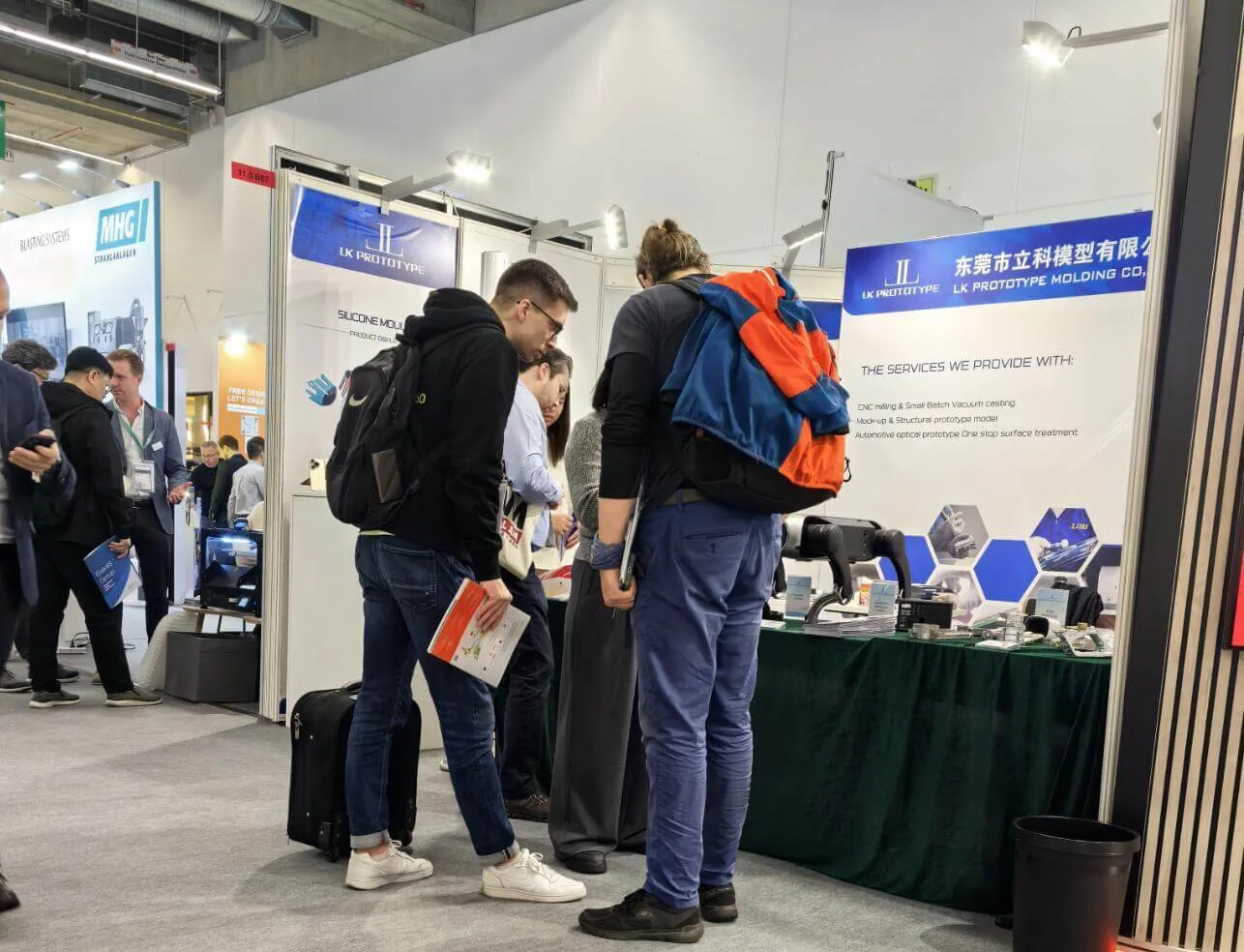
Start your project with LKprototype
LKprototype company simplifies procurement for custom manufacturing, Suitable for making your products or prototypes with a variety of materials, such as metal or plastic, silicone rubber, from 3D Printing to CNC Machined Parts and Vacuum Casting , with a focus on speed and efficiency. Our platform provides instant quotes. With LKprototype, You can connect with the team to communicate your project to ensure quality and on-time delivery.
Start with an instant quote and experience how our technology and expertise can make custom part procurement faster and easier.
 LKprototype
LKprototype
